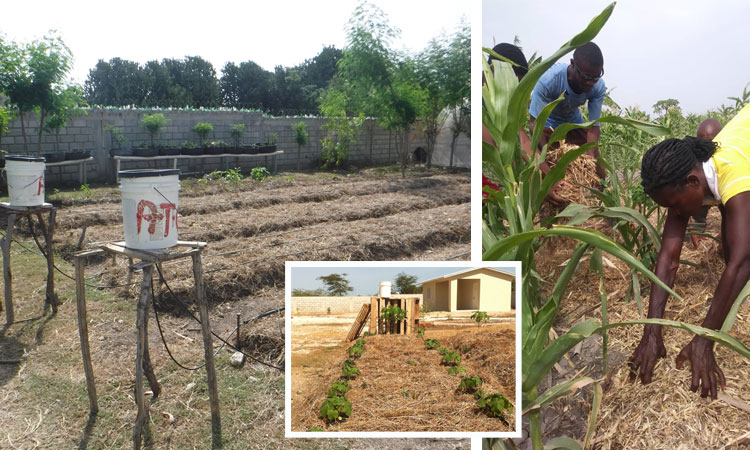Have you experienced real thirst this summer? Your throat so dry and so parched you dreamed of a long, cool drink of water? That’s how everyday life is for so many Haitians… and their gardens too. During the past 15 or so years, most areas of Haiti have been undergoing “desertification,” becoming like a desert… dry, dusty, and without reliable rainfall. The massive deforestation all over Haiti is causing this change from a once lush tropical area to a dry, harsh area. It is hard to garden in those circumstances.
However, at our Agricultural Training Center (ATC), Wilner demonstrates and teaches sustainable methods of irrigating gardens and choosing certain drought-tolerant plants so families can have productive gardens, even in desert-like conditions. We stress the use of deep, heavy mulches to keep soil temperatures lower and preserve moisture in the ground and to better permit any rain that does fall to penetrate deeper into the soil, rather than running off the otherwise sunbaked soil. These irrigation methods, like using drip systems or setting recycled jugs into the earth near the plants and adding water to those, get the water specifically towards the roots. Some areas of Haiti that have available groundwater use a system of small canals and troughs to run water near their plants. However, this requires an abundance of running water and without the protection from heavy mulch, even the trough water will evaporate. These sustainable methods are all adapted from a course on gardening called “Gardening God’s Way.” It turns out that God is really the original sustainable gardener.
Rad Hazelip, Assistant Executive Director


